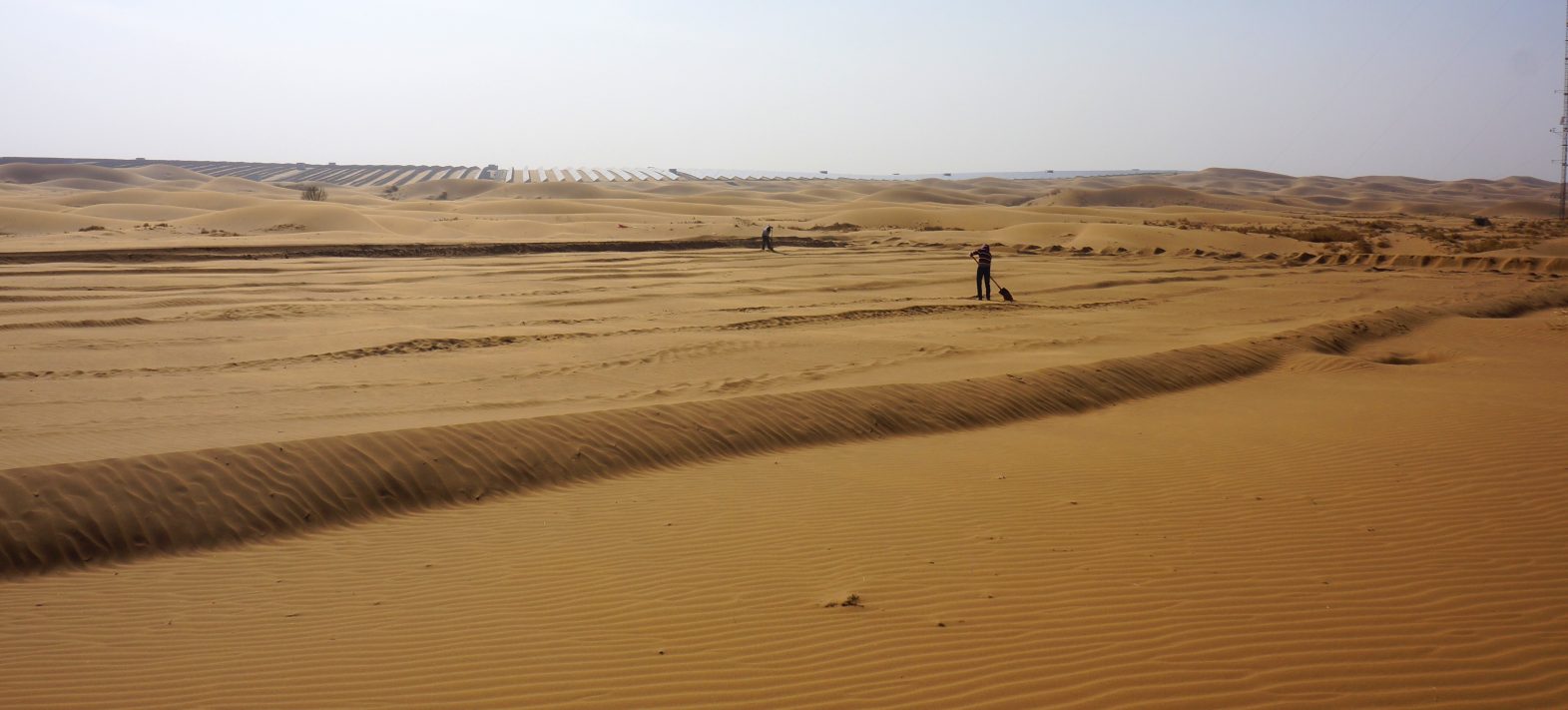Dune fields are a key focus for research into geomorphology (the science that studies the formation of landscapes) because they offer regular patterns and periodic shapes that can be observed at all scales on Earth and more widely within the Solar System, such as on Mars and Titan (Saturn’s moon). Dune fields are therefore often the first landscapes observed by planetary exploration missions.
The formation of dune fields is the result of interactions between wind, topography and the transport of sand grains, which impose a minimum size (approximately 10 m on Earth), beyond which the dunes can become destabilised. This instability is at the origin of the periodic patterns that are systematically found across all dune fields. The periodicity of the dunes can thus be directly linked to the properties of the flow (wind) and transport (sand grain size) and therefore to the atmospheric and environmental conditions in which the dunes develop.
Understanding the physical processes at the origin of dunes and validating theoretical models by means of laboratory experiments or field observations are therefore questions that have been driving the scientific community for a long time, and are still the subject of numerous studies, particularly because of the complexity of reproducing the initial conditions favourable to the development of instability. Since the scales involved make it impossible to study the formation of wind dunes in a wind tunnel, one alternative is to carry out experiments in situ under natural wind conditions.
In a study published on April 19th 2021 in the journal Proceedings of the National Academy of Sciences, a Sino-French team of scientists from the IPGP, Université de Paris, ESPCI Paris-PSL, CNRS1 and the Chinese Academy of Sciences proposes, for the first time, to validate the instability at the origin of dunes using an extraordinary field experiment.
The authors of the study began by levelling an area of dunes measuring 75×100 m² (the equivalent of a very large football pitch) to the east of the Gobi Desert in China. Then, for more than 3 years, between 2014 and 2017, the team took high-resolution measurements of all the topographical characteristics of the new dunes that formed there, from their emergence to their mature size.1
These data enabled them to verify that the birth of the dunes was indeed the result of a size selection mechanism governed by the variation in sand flows and corresponding to a wavelength of 15 m, which leads to the emergence of a periodic pattern of the same size throughout the experimental site. The international team was then able to compare these experimental results with the predictions of a dune instability model using the transport and wind properties measured in parallel in the field, and they observed remarkable agreement between the theory and the observations!
This validation of the mechanisms at the origin of dune instability not only provides a better understanding of the emergence and evolution of dune fields on Earth, but also makes it possible to trace back the external conditions that prevailed when these dune fields were set up, and thus obtain atmospheric and environmental data where it is impossible to measure them directly, in particular on other planetary bodies.
Ref : Ping Lü, Clément Narteau, Zhibao Dong, Philippe Claudin, Sébastien Rodriguez, Zhishan An, Laura Fernandez-Cascales, Cyril Gadal, and Sylvain Courrech du Pont, Direct validation of dune instability theory, PNAS 2021 Vol. 118 – https://doi.org/10.1073/pnas.2024105118
To find out more, visit
1. This large-scale experiment, carried out as part of the LabEx UnivEarthS, the ANR EXODUNES and SONO and the Laboratoire International Associé SALADYN (CNRS-INSU), is detailed and can be visited virtually on the exodunes360.fr website.








